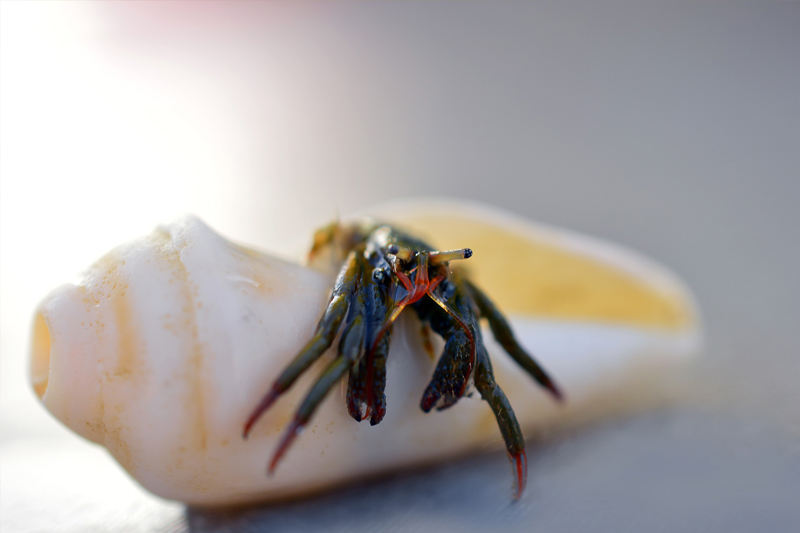All pets have facts & myths and that doesn’t exclude Hermit Crabs. In fact, they are the most misunderstood in the pet scene and often referred to as easy to care for and worse “throwaway” pets. But in reality hermit crabs require just as much effort just like cats and dogs.
They need as much care and attention as possible. They can live for over 20 years! Yes, they can outlive our cats and dogs if cared for properly.
So, let’s debunk these myths!
Myth: You can place hermit crabs in any type of enclosures including wire cages
Hermit crabs use their gills to breathe and for this, they require a humid environment to thrive and survive. So any type of enclosures including wire cages won’t work for them. The only enclosures that work for hermit crabs are aquariums and terrariums.
If you’re a first-time hermit crab owner and can’t afford the above-mentioned enclosures, we would suggest going for a DIY. A large plastic tub can be your hermit crabs’ temporary enclosure.
Myth: They will thrive and survive any type of temperature and humidity
Important to know that hermit crabs are tropical species, their survival depends on the environmental conditions to survive. Temperature and humidity levels play a big role in this.
We’d suggest putting a heat mat to the back of your hermit crabs’ enclosure to get a warm temperature to the enclosure. So, what’s the purpose of doing this? To warm the air in the enclosure. And if you’re in a cold environment, insulating the outer layer of the enclosure with the use of a water heater blanket will greatly help to maintain the temperature of the enclosure.
Myth: Hermit Crabs Only Requires a Minimum Amount of Sand
Hermit Crabs goes into the molting process and when they do this, they bury themselves in the sand. So assuming that they don’t need that much sand is a mistake since they heavily rely on the following factors such as depth and moisture of the sand. So take note of the following:
- Depth: This one is important, the depth of the sand in the enclosure should be at least half of the enclosure’s height. The sand should be a minimum of six inches deep. As mentioned above the depth is important because when they go into the molting process they want to be buried deep in the sand. This will avoid getting attacked or hurt by other hermit crabs.
- Materials: Now that you know that you need sand for the enclosure, don’t go rushing to get sand. The sand should be made of two materials: coconut husk bedding and the sand that kids play with. So why coconut husk bedding? It helps and maintains the moisture of the sand which helps the hermit crabs for burrowing.
Myth: If You’re Not Careful, Your Hermit Crab May Drown
This is false since Hermit Crabs in their natural habitat submerge themselves in the ocean to live, feed, and even reproduce. But of course, it is a different story when they are in captivity.
The following are needed for them to survive:
- Fresh saltwater. While tap water is an option if you have no access to saltwater, it’s important to use a de-chlorinator before giving it to your hermit crabs.
- Always provide your hermit crabs with something for them to climb out such as live rocks or anything of them to climb on.
Myth: You Can Hold and Pet Them

Hermit Crabs are fragile species hence they shelter themselves in shells. That’s why you don’t hold (unless necessary) and pet them. One slip and you will drop them and they will and can suffer major injuries. That’s why you don’t also give them to kids as pets.
They are also not handling stress very well, so removing them in their enclosures can cause stress because remember, they need the humidity and temperature of their enclosure for them to breathe properly through their gills. So removing them and playing with them is a huge NO-NO.
So there you have it, the myths that we debunked! Hopefully, you learned a lot from this article.
